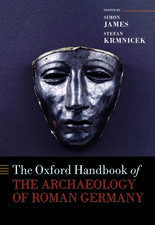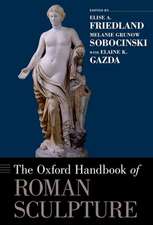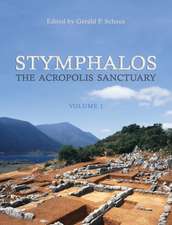Death in Late Bronze Age Greece: Variations on a Theme
Editat de Joanne M. A. Murphyen Limba Engleză Hardback – 24 ian 2020
Preț: 515.64 lei
Preț vechi: 683.39 lei
-25% Nou
Puncte Express: 773
Preț estimativ în valută:
98.68€ • 101.94$ • 82.13£
98.68€ • 101.94$ • 82.13£
Carte tipărită la comandă
Livrare economică 15-21 martie
Preluare comenzi: 021 569.72.76
Specificații
ISBN-13: 9780190926069
ISBN-10: 0190926066
Pagini: 356
Dimensiuni: 236 x 163 x 28 mm
Greutate: 0.79 kg
Editura: Oxford University Press
Colecția OUP USA
Locul publicării:New York, United States
ISBN-10: 0190926066
Pagini: 356
Dimensiuni: 236 x 163 x 28 mm
Greutate: 0.79 kg
Editura: Oxford University Press
Colecția OUP USA
Locul publicării:New York, United States
Recenzii
Murphy has assembled 14 chapters of uniformly high quality demonstrating well the considerable diversity of Aegean communities' attitude towards death and the afterlife during Late Bronze age ... This volume will therefore have a lasting value, not just for the representativeness of these variations as well as regular and recurrent form of burial rites, but also for the high number of ground-breaking chapters on unpublished data. It deserves the attention of all those interested in issues in mortuary archaeology.
Tombs are among the most meaningful archaeological evidence that help to reconstruct past societies. Discussions on, and presentations of, the most recent methodological advances, i.e. theory and fieldwork techniques, in funerary archaeology constitute a very important part of archaeological bibliography internationally. The edited volume, Death in Late Bronze Age Greece, belongs to this corpus of contributions with a particular focus on the Late Bronze Age period in Greece...The book contains papers dealing with various areas of the Aegean, types of tombs, funerary practices, a wide range of methodological issues, and a variety of approaches towards funerary archaeology.
Tombs are among the most meaningful archaeological evidence that help to reconstruct past societies. Discussions on, and presentations of, the most recent methodological advances, i.e. theory and fieldwork techniques, in funerary archaeology constitute a very important part of archaeological bibliography internationally. The edited volume, Death in Late Bronze Age Greece, belongs to this corpus of contributions with a particular focus on the Late Bronze Age period in Greece...The book contains papers dealing with various areas of the Aegean, types of tombs, funerary practices, a wide range of methodological issues, and a variety of approaches towards funerary archaeology.
Notă biografică
Dr Murphy holds degrees from the University of Cincinnati (Ph.D.), and University College Dublin, and studies Greek archaeology, archaeological methods and theory, the archaeology of religion, and the archaeology of mortuary systems. She is Director of the Kea Archaeological Research Survey that examines the value of pedestrian survey as an archaeological method.












